哈佛中國史1-6卷套裝
依據《出版管理條例》,本書個別內容與中國實際情況不符,已做適當處理,但不影響任何整體閲讀。此屬正常情況,請事先知悉,以免給您帶來不便。特此説明。
第1卷:The Early Chinese Empires: Qin and Han 早期中華帝國:秦與漢
第2卷:China between Empires: The Northern and Southern Dynasties 分裂的帝國:南北朝
第3卷:Chinas Cosmopolitan Empire: The Tang Dynasty 世界性的帝國:唐朝
第4卷:The Age of Confucian Rule: The Song Transformation of China 儒家統治的時代:宋的轉型
第5卷:The Troubled Empire: China in the Yuan and Ming Dynasties 掙扎的帝國:元與明
第6卷:Chinas Last Empire: The Great Qing 末代中華帝國:大清
關於尺寸説明:
本詳情頁每捲尺寸僅供參考
因該1-6卷為自組合合集,每卷實際尺寸不完全一樣大小。以出版社印刷實物為準。不接受關於每捲尺寸不完全一致問題退換貨。請知悉。
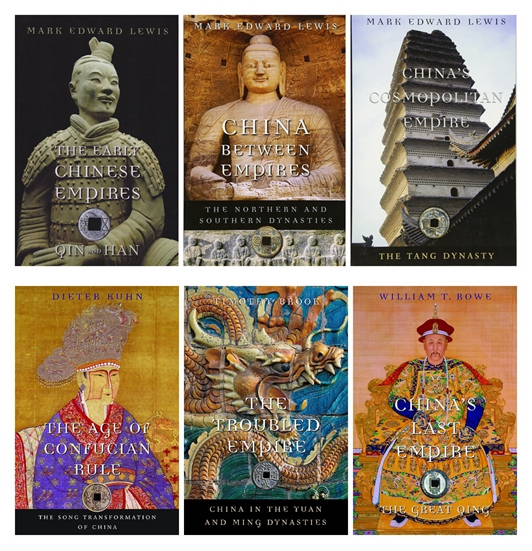
《哈佛中國史》六卷本叢書,由國際漢學家卜正民教授領銜主編,集結羅威廉、陸威儀和迪特.庫恩三位知名漢學家,萃集半個世紀以來西方的中國史研究成果,以全球史視野、多學科學識顛覆傳統中國史敍述模式,傾十年之功寫就,是繼《劍橋中國史》之後能代表西方半個世紀以來中國史研究全新成果和水準的多卷本中國通史。
《哈佛中國史》叢書站在風起雲湧的21世紀,從全球史角度重寫“世界中國史”,引導世界重新思考當下中國。叢書上自公元前221年秦朝一統天下,下至20世紀初清朝終結,分為六個帝國時代——秦漢古典時代、南北朝大分裂、世界性帝國唐朝、宋朝的社會轉型、氣候變遷影響下元明帝國的興衰,以及成就斐然的大清王朝,進而串起2000年中華文明跌宕起伏的榮辱命運。
《哈佛中國史》叢書專為普通讀者而作,語言生動活潑,文風簡明精悍,結構精緻合理,極富故事性和啟發性,是一套給大眾讀者的權威、簡潔、清晰、獨特的全新中國通史。
《哈佛中國史》叢書出版後獲得很多讚譽,被稱為“多卷本中國史的黃金標準”,堪稱哈佛大學出版社的典範之作,已被芝加哥大學、康奈爾大學、不列顛哥倫比亞大學、香港科技大學、香港城市大學等數十所世界知名大學指定為中國史課程教材。
Early Chinese Empires(History of Imperial China #1)
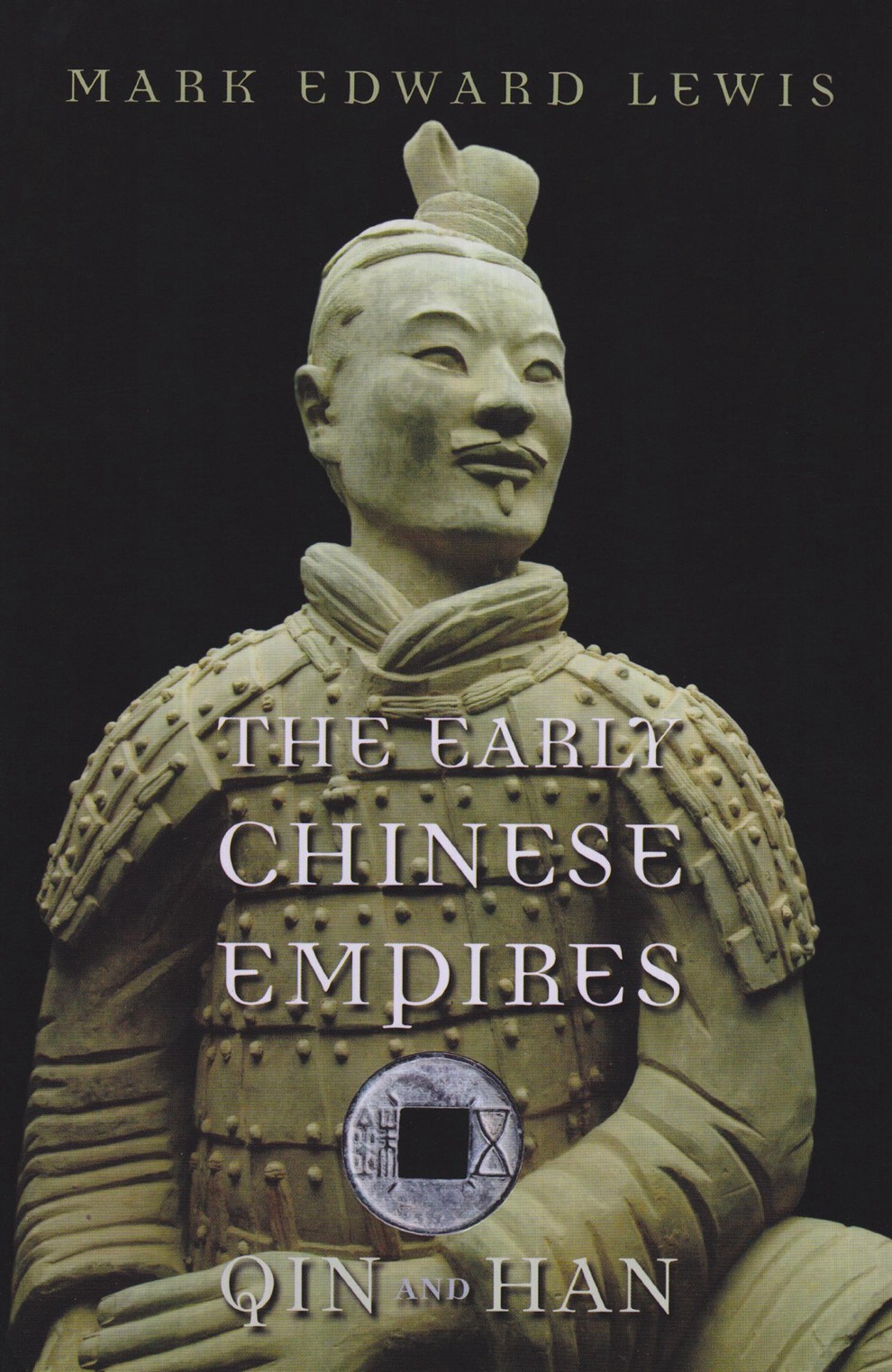
Author: Mark Edward Lewis, Timothy Brook
Paperback: 336 pages
Publisher: Harvard University Press (1 Oct. 2010)
Language: English
ISBN-10: 0674057341
ISBN-13: 978-0674057340
Product Dimensions: 23.3 x 15.6 x 2.2 cm
Book De*ion
In 221 bc the First Emperor of Qin unified the lands that would become the heart of a Chinese empire. Though forged by conquest, this vast domain depended for its political survival on a fundamental reshaping of Chinese culture. With this informative book, we are present at the creation of an ancient imperial order whose major features would endure for two millennia. The Qin and Han constitute the 'classical period' of Chinese history - a role played by the Greeks and Romans in the West. Mark Edward Lewis highlights the key challenges faced by the court officials and scholars who set about governing an empire of such scale and diversity of people.
He traces the drastic measures taken to transcend, without eliminating, these regional differences:
* the invention of the emperor as the divine embodiment of the state;
* the establishment of a common * for communication and a state-sponsored canon for the propagation of Confucian ideals;
* the flourishing of the great families, whose domination of local society rested on wealth, landholding, and elaborate kinship structures;
* the demilitarization of the interior; and the impact of non-Chinese warrior-nomads in setting the boundaries of an emerging Chinese identity.
The first of a six-volume series on the history of imperial China, "The Early Chinese Empires" illuminates many formative events in China's long history of imperialism - events whose residual influence can still be discerned today.
China Between Empires: The Northern and Southern Dynasties (History of Imperial China #2)
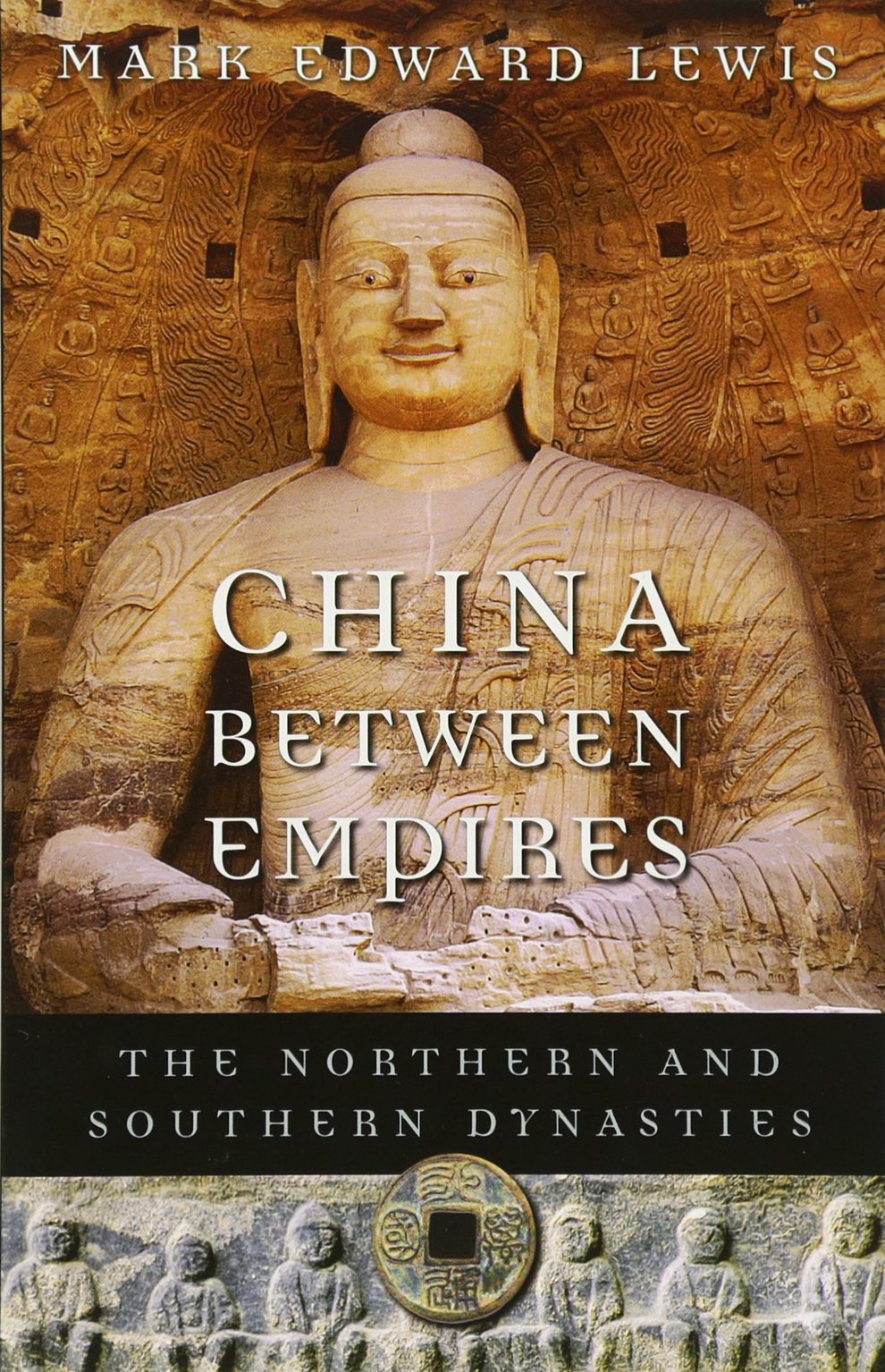
Author:Mark Edward Lewis, Timothy Brook
Paperback: 352 pages
Publisher: Harvard University Press (1 April 2011)
Language: English
ISBN-10: 0674060350
ISBN-13: 978-0674060357
Product Dimensions: 23.2 x 15.5 x 2.3 cm
Book De*ion
After the collapse of the Han dynasty in the third century CE, China divided along a north-south line. Mark Lewis traces the changes that both underlay and resulted from this split in a period that saw the geographic redefinition of China, more engagement with the outside world, significant changes to family life, developments in the literary and social arenas, and the introduction of new religions. The Yangzi River valley arose as the rice-producing center of the country. Literature moved beyond the court and capital to depict local culture, and newly emerging social spaces included the garden, temple, salon, and country villa.
The growth of self-defined genteel families expanded the notion of the elite, moving it away from the traditional great Han families identified mostly by material wealth. Trailing the rebel movements that toppled the Han, the new faiths of Daoism and Buddhism altered every aspect of life, including the state, kinship structures, and the economy. By the time China was reunited by the Sui dynasty in 589 ce, the elite had been drawn into the state order, and imperial power had assumed a more transcendent nature. The Chinese were incorporated into a new world system in which they exchanged goods and ideas with states that shared a common Buddhist religion. The centuries between the Han and the Tang thus had a profound and permanent impact on the Chinese world.
China's Cosmopolitan Empire (History of Imperial China #3)

Author: Mark Edward Lewis, Timothy Brook
Paperback: 368 pages
Publisher: Harvard University Press; Reprint edition (3 April 2012)
Language: English
ISBN-10: 0674064011
ISBN-13: 978-0674064010
Product Dimensions: 15.4 x 2.4 x 23.3 cm
Book De*ion
The Tang dynasty is often called China's "golden age", a period of commercial, religious, and cultural connections from Korea and Japan to the Persian Gulf, and a time of unsurpassed literary creativity. Mark Lewis captures a dynamic era in which the empire reached its greatest geographical extent under Chinese rule, painting and ceramic arts flourished, women played a major role both as rulers and in the economy, and China produced its finest lyric poets in Wang Wei, Li Bo, and Du Fu. The Chinese engaged in extensive trade on sea and land. Merchants from Inner Asia settled in the capital, while Chinese entrepreneurs set off for the wider world, the beginning of a global diaspora.
The emergence of an economically and culturally dominant south that was controlled from a northern capital set a pattern for the rest of Chinese imperial history. Poems celebrated the glories of the capital, meditated on individual loneliness in its midst, and described heroic young men and beautiful women who filled city streets and bars. Despite the romantic aura attached to the Tang, it was not a time of unending peace. In 756, General An Lushan led a revolt that shook the country to its core, weakening the government to such a degree that by the early tenth century, regional warlordism gripped many areas, heralding the decline of the Great Tang.
The Age of Confucian Rule: The Song Transformation of China(History of Imperial China #4)
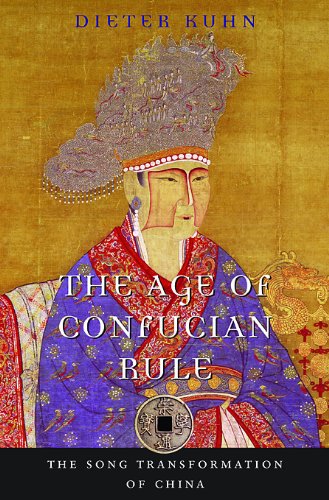
Author: Dieter Kuhn, Timothy Brook
Paperback: 368 pages
Publisher: Harvard University Press; Reprint edition (4 Oct. 2011)
Language: English
ISBN-10: 0674062027
ISBN-13: 978-0674062023
Product Dimensions: 15.7 x 2.3 x 23.2 cm
Book De*ion
Just over a thousand years ago, the Song dynasty emerged as the most advanced civilization on earth. Within two centuries, China was home to nearly half of all humankind. In this concise history, we learn why the inventiveness of this era has been favorably compared with the European Renaissance, which in many ways the Song transformation surpassed. With the chaotic dissolution of the Tang dynasty, the old aristocratic families vanished.
A new class of scholar-officials - products of a meritocratic examination system - took up the task of reshaping Chinese tradition by adapting the precepts of Confucianism to a rapidly changing world. Through fiscal reforms, these elites liberalized the economy, eased the tax burden, and put paper money into circulation. Their redesigned capitals buzzed with traders, while the education system offered advancement to talented men of modest means.
Their rationalist approach led to inventions in printing, shipbuilding, weaving, ceramics manufacture, mining, and agriculture. With a realist's eye, they studied the natural world and applied their observations in art and science. And with the souls of diplomats, they chose peace over war with the aggressors on their borders. Yet persistent military threats from these nomadic tribes - which the Chinese scorned as their cultural inferiors - redefined China's understanding of its place in the world and solidified a sense of what it meant to be Chinese. "The Age of Confucian Rule" is an essential introduction to this transformative era. "A scholar should congratulate himself that he has been born in such a time" (Zhao Ruyu, 1194).
The Troubled Empire: China in the Yuan and Ming Dynasties(History of Imperial China #5)
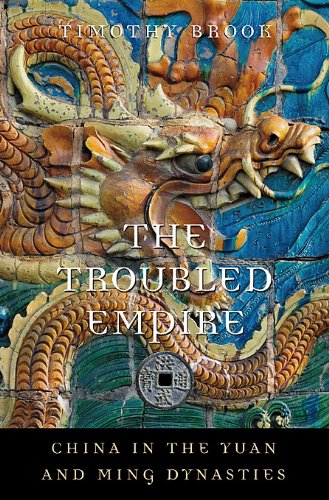
Author: Timothy Brook
Paperback: 336 pages
Publisher: Harvard University Press; Reprint edition (5 Mar. 2013)
Language: English
ISBN-10: 0674072537
ISBN-13: 978-0674072534
Product Dimensions: 23.5 x 16 x 2.2 cm
Book De*ion
The Mongol takeover in the 1270s changed the course of Chinese history. The Confucian empire--a millennium and a half in the making--was suddenly thrust under foreign occupation. What China had been before its reunification as the Yuan dynasty in 1279 was no longer what it would be in the future. Four centuries later, another wave of steppe invaders would replace the Ming dynasty with yet another foreign occupation. "The Troubled Empire" explores what happened to China between these two dramatic invasions.
If anything defined the complex dynamics of this period, it was changes in the weather. Asia, like Europe, experienced a Little Ice Age, and as temperatures fell in the thirteenth century, Kublai Khan moved south into China. His Yuan dynasty collapsed in less than a century, but Mongol values lived on in Ming institutions. A second blast of cold in the 1630s, combined with drought, was more than the dynasty could stand, and the Ming fell to Manchu invaders.
Against this background--the first coherent ecological history of China in this period--Timothy Brook explores the growth of autocracy, social complexity, and commercialization, paying special attention to China's incorporation into the larger South China Sea economy. These changes not only shaped what China would become but contributed to the formation of the early modern world.
China's Last Empire(History of Imperial China #6)
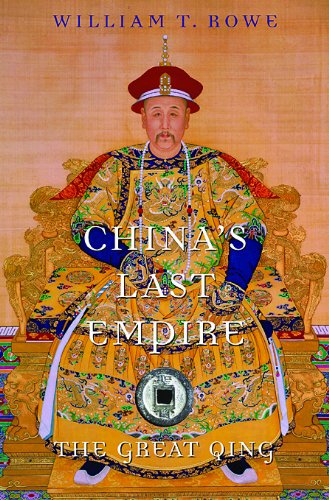
Author:William T.Rowe, Timothy Brook
Paperback: 368 pages
Publisher: Harvard University Press; Reprint edition (4 Sept. 2012)
Language: English
ISBN-10: 0674066243
ISBN-13: 978-0674066243
Product Dimensions: 23.
評論曬單